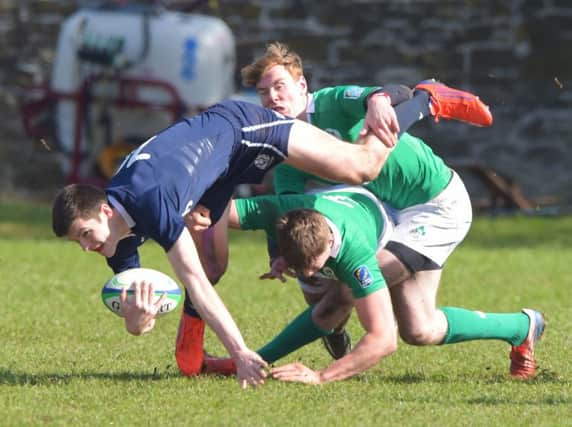Concerns over lack of school rugby injury research


A new study has criticised the lack of surveillance and prevention programmes at youth level in the sport and said plans to encourage greater numbers of pupils to play should be shelved.
The research, published in the British Medical Journal, stressed that, until authorities do more to combat injuries among pupils, they are failing in their duty of care.
Advertisement
Hide AdAdvertisement
Hide AdThe team at the Centre for Primary Care and Public Health at Queen Mary University of London point out that around 12 per cent of child and adolescent rugby players sustain an injury severe enough to require at least seven days’ absence from playing in a season, with concern over how concussion injuries are managed.
Yet New Zealand is the only country with a comprehensive injury surveillance system that captures injuries occurring on the field and in training across professional and amateur, adult and child levels of the sport.
Data collated in that country, the researchers say, has been used to successfully inform injury prevention through a so-called RugbySmart programme, which educates coaches about player condition, safe techniques in contact phases of the game, and injury management
Allyson Pollock, professor of public health research and policy at the university, called on the UK government to introduce a similar initiative.
There are plans to increase the prominence of rugby union and rugby league in schools via around thousands of links between schools and rugby organisations, but Prof Pollock, the lead author of the report, believes such a step is premature.
She said: “Given that children are more susceptible to injuries such as concussion and often take longer to recover fully, the government’s plan to increase funding of and participation in rugby in schools in the absence of a comprehensive system for injury surveillance and prevention – including tertiary prevention and rehabilitation – is worrying. Only by collecting injury data and by providing feedback to individuals and organisations working on safety initiatives will the short and long term effects of injury prevention programmes, whether for rugby or any other sport, be known.”
A 2010 pilot study by Prof Pollock and Dr Alastair Nicol of rugby union injuries in Scottish schools found that, out of 193 matches, there were 37 injuries, 26 of which occurred during play. While a fifth of those injured required time off school, only one pupil was admitted to accident and emergency.
Following a spate of serious injuries suffered by young players, Scottish Rugby introduced reforms to prevent physically immature players playing against and with physically mature players. The policy prevents boys who have not yet turned 16 from playing with or against players who are aged 16 and over as they would “be exposed to an increased risk”.